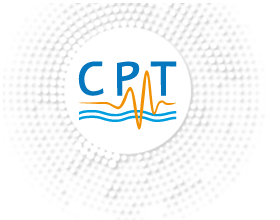Agenda
Vendredi 10 mars 2023
Open EFTs : How can we access the quantum information properties of inflationary models ?
Thomas Colas
Despite being created through a fundamentally quantum-mechanical process, cosmological structures have not yet revealed any sign of genuine quantum correlations. Among the obstructions to the direct detection of quantum signatures in cosmology, environmental-induced decoherence is arguably one of the most inevitable. If we want to assess decoherence in cosmology, we need to evaluate the quantum information properties of inflationary models. In this talk, I will present the Open Effective Field Theory program and exhibit situations where the dynamics of cosmological inhomogeneities evade what was known so far in the lab.
Modeling Single Cell and Multicellular Systems using the Phase Field Method
Marcos Gouveia, Center for Physics of the University of Coimbra
Abstract :
In the past two decades, the phase field method has been a tool used in mathematical models of biological systems. Its ability to describe systems with complex geometries, using a diffuse interface, avoids the problem of interface tracking and simplifies the boundary conditions in irregularly shaped domains.
We present a single cell model for the dynamics of keratin in the cytoskeleton, where we intend to understand how the spatial distribution of the filament network is affected when the cell expresses mutant keratin. To further understand how the amount of mutated keratin in the cell influences the formation of keratin aggregates and the filament network disruption, we propose that an asymmetric binding of wild-type and mutant keratin is in the genesis of these keratin aggregates.
Furthermore, we show how the phase field method can be coupled to elasticity theory, in order to describe how the mechanical properties of the extracellular matrix can influence endothelial cell migration during the formation of new blood vessels. Our results show that the length of the resulting vessels do not depend linearly on the stiffness of the ECM, and there is an optimal value of rigidity for which cell migration is maximized.
Finally, we present a multi-phase field model to describe a vessel with a tubular structure where each individual cell and the interactions with its vicinity are described using a set of order parameters, one for each cell. We show that endothelial cell polarization is essential to obtain a vessel structure where cell shape is close to what is observed experimentally. We also simulate a sprouting event and observe how the velocity of the cell that leads the formation of the sprout, as well as the proliferative activity of its neighboring cells affects the newly formed vessel structure.
